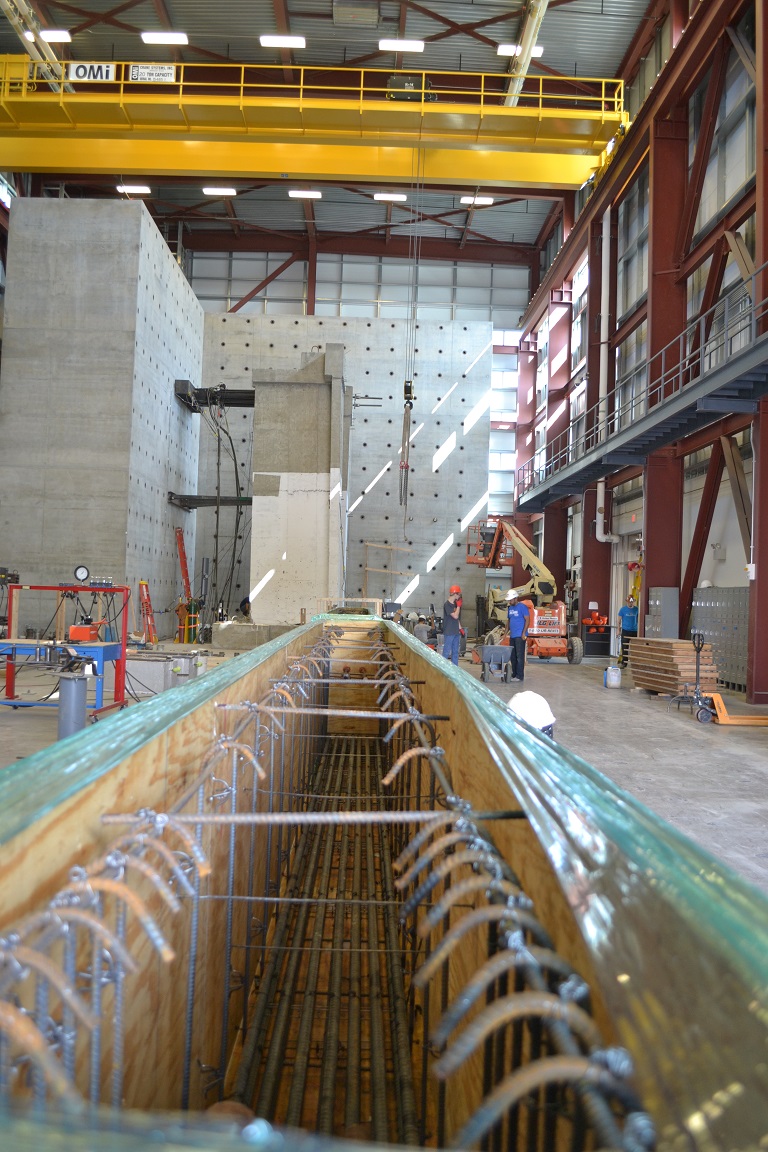Structures
Recent areas of interest include structural analysis and design, structural mechanics, and engineering materials. Areas of strength include reinforced concrete behavior and design, structural steel design, seismic performance, concrete materials, fiber-reinforced composites, structural analysis, expert systems, and fracture mechanics.
Structural Laboratories
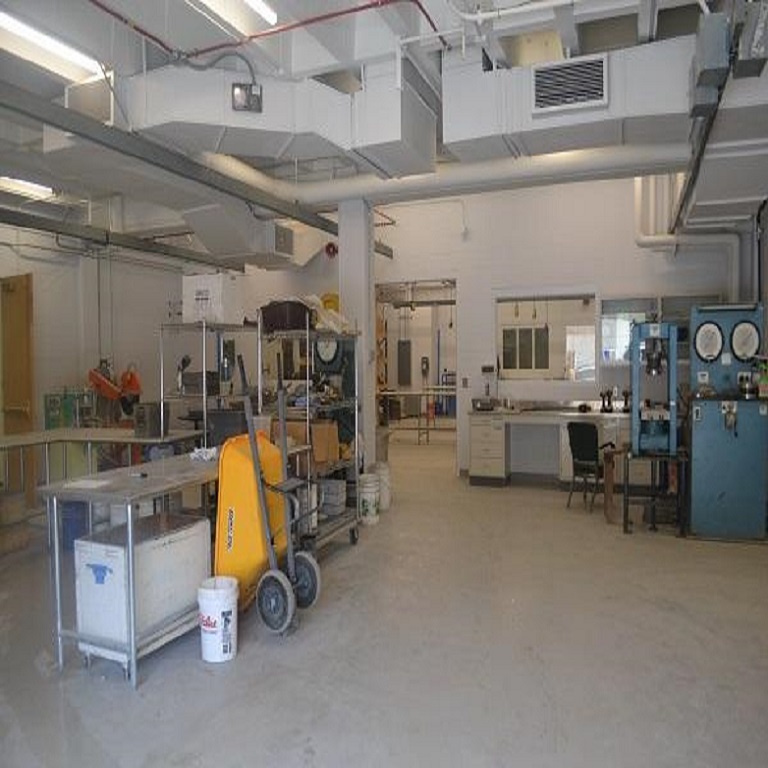
The Concrete Laboratory is located in 1167 Learned Hall. The Laboratory is equipped to run standard tests on cement, aggregates, and concrete. The laboratory is operated as both a teaching and research facility. Equipment is available to test concrete aggregate for deleterious behavior, including alkali silica reactivity, and to measure aggregate properties as they affect mixture proportioning. Freeze-thaw equipment is available for running tests under both Procedures A and B of ASTM C666. A walk-in freezer is used for scaling tests. Concrete is cured under controlled temperature and humidity in the lab's curing room. Two hydraulic testing machines, with load capacities of 180 tons (400,000 lb), are used for concrete strength determination.
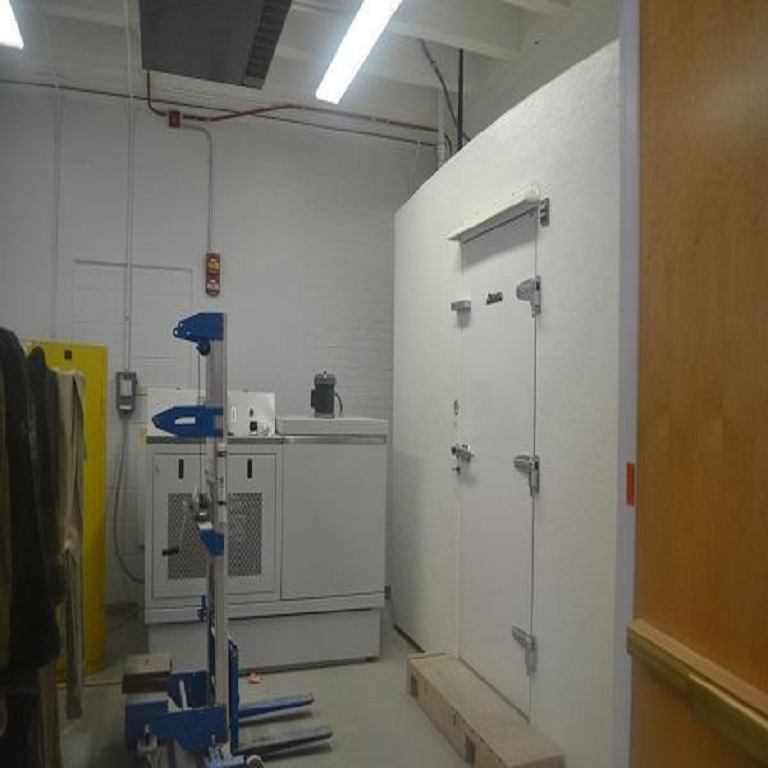
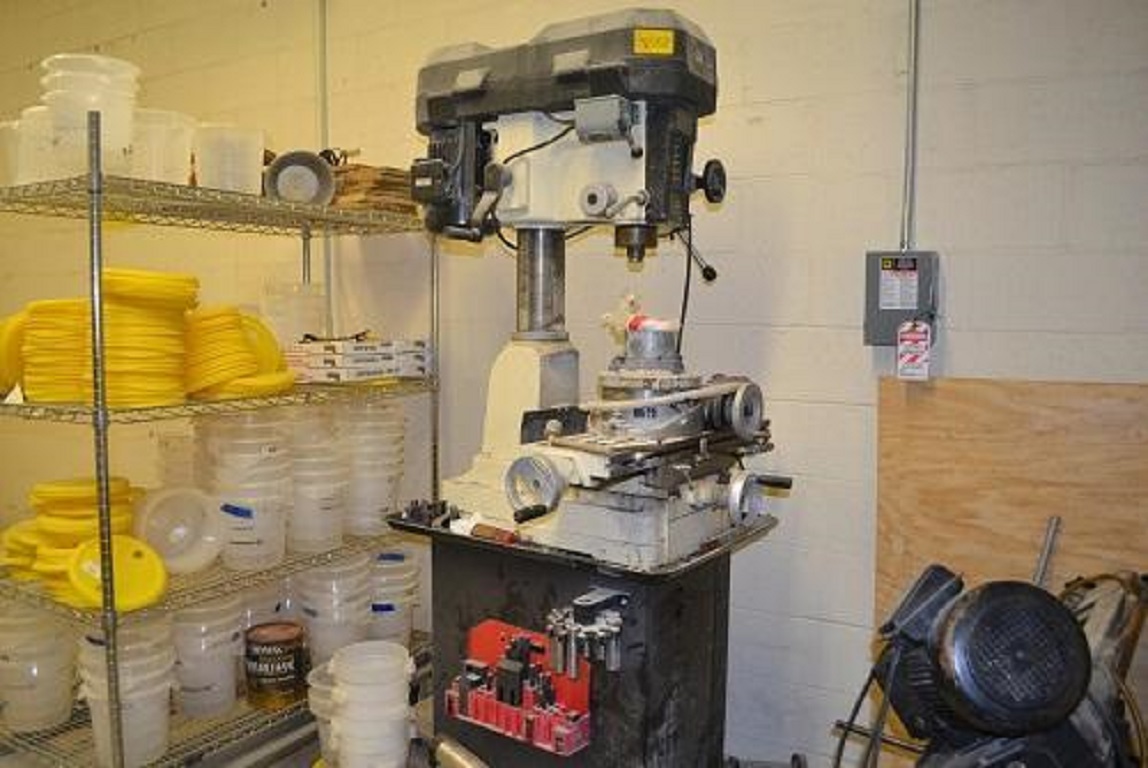
The Corrosion Testing Laboratory is in 1151 Learned and is equipped with an electrochemical impedance system, potentiostats, voltmeters, reference electrodes (Calomel and copper-copper sulfate), ion-specific electrodes, and heating tents for Southern Exposure and cracked beam tests. Southern Exposure and cracked beam specimens. Specimens are used for evaluating reinforcement and admixtures for corrosion resistance under alternating cycles of salt exposure and elevated temperature. A pore press provides the capability of extracting pore solution from hydrated cement paste, mortar, and concrete. The lab is also equipped with a salt-spray cabinet, a Taber abraser, and an ASTM G14 impact tester. The lab can evaluate epoxy coatings on reinforcing steel in accordance with ASTM A775 and A934 and evaluate the corrosion resistance of stainless steel reinforcement in accordance with ASTM A955.
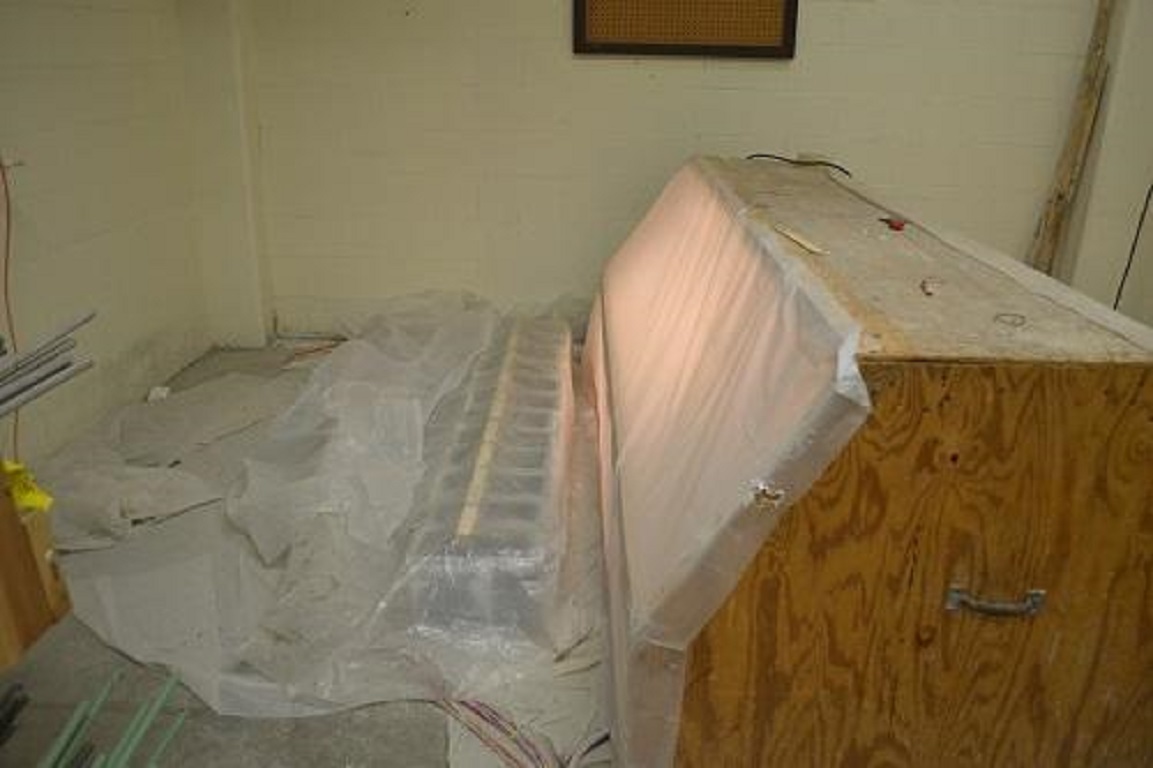
The Learned Hall Structural Testing Laboratory, which has been actively operated since its opening in the 1970s, has 4,000 ft2 of open laboratory area with a clear height of 30 ft. There is a 20-ton traveling crane for transporting specimens and equipment. The strong floor has anchor points spaced 3 ft on center that support loads of up to 100,000 pounds at each anchor location. The laboratory has three MTS hydraulic power units with rated flow capacities of 90, 30, and 20 gpm to supply hydraulic oil to testing equipment. A Flex-Text II CTC control system capable of managing up to four actuators is available for cyclic and dynamic testing of full-scale structural components within the test bay. Reaction frames are available for testing approximately full-scale bridge systems as well as structural components. The Learned Hall Structural Testing Laboratory also has three digitally controlled self-reacting hydraulic testing machines with capacities of 60,000, 120,000 and 600,000 pounds in both tension and compression.
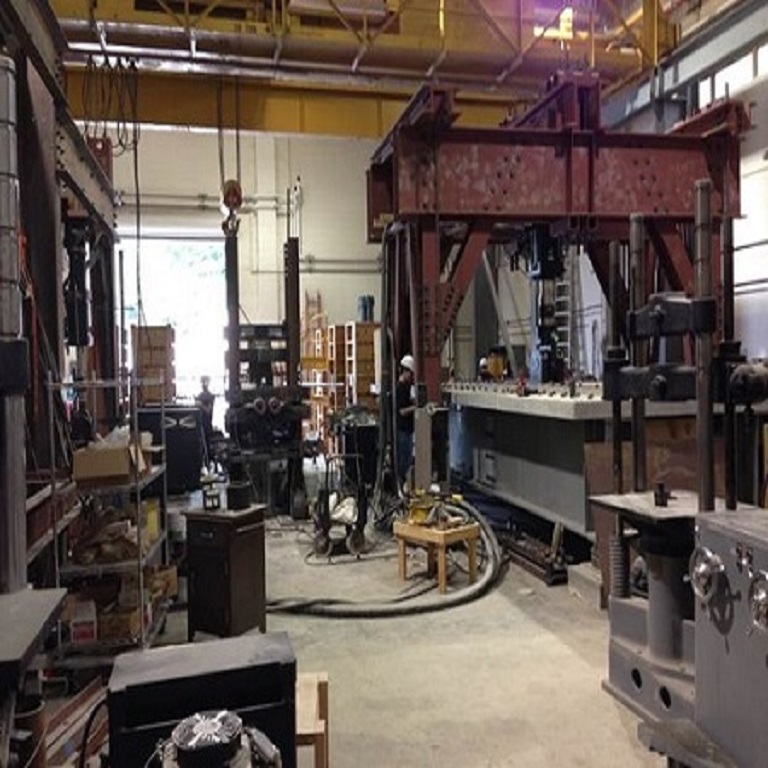
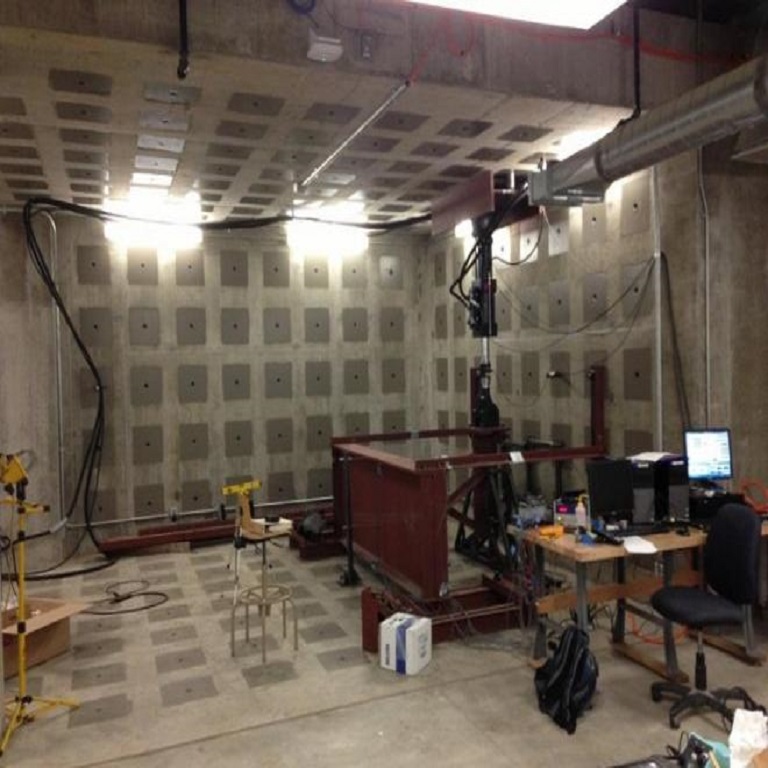
The Marshal G. Lutz Fracture and Fatigue Laboratory is housed in the new Measurements, Materials and Sustainable Environment Center (M2SEC) Room G548. It has static and servo-hydraulic test equipment. A structural testing room for component and reduced-scale model testing has 360 ft2 of reaction floor space with orthogonal reaction walls on two sides of the test floor and a reaction ceiling with a clear height of 12 ft. Loads up to 100 kips can be applied using jack systems and servo-hydraulic actuators to tie-down locations on multiple planes. The tie-downs are evenly spaced at 2 ft. on center throughout the floor, walls and ceiling of the testing room.
Cyclic and dynamic testing of full-scale structural components or reduced-scale models can be performed using an arrangement of servo-hydraulic actuators and hydraulic rams. Actuators are controlled with an MTS Flextest 40 controller capable of controlling up to 4 actuators separately or in tandem. Servo hydraulic actuators are powered using an MTS Silentflo hydraulic power unit with a rated flow of 120 gpm. The Marshal G. Lutz Fracture and Fatigue Laboratory has two servo-hydraulic test frames with capacities up to 110 kips. A 35-kip and a 110-kip closed-loop servo-hydraulic universal testing system (MTS and Instron) are housed in a 200 ft2 area dedicated to small component and material testing.

The West Campus Structural Testing Facility, which opened in 2014, is designed to accommodate testing of full-scale systems and components. The laboratory has 10,000 ft2 of open laboratory area with a clear height of 43 ft. The strong floor has anchor points spaced 3 ft on center that support loads of up to 100,000 pounds at each anchor location. An L-shaped reaction wall is located at one end of the reaction floor. Each face of the wall has a 36 ft long by 40 ft tall reaction area with anchor points spaced 3 ft on center. The wall allows the application of loads of up to 880,000 pounds anywhere on its surface in one or two directions simultaneously. The laboratory is equipped with two 20-ton cranes that can be operated independently or jointly. It has an MTS Silentflo hydraulic power unit with a rated flow capacity of 180 gpm and an MTS Flex-Text 60 control system capable of controlling up to eight channels operating jointly or separately through up to 6 different test stations.
Testing equipment is shared between the laboratories and with Marshal G. Lutz Fracture and Fatigue Laboratory. This shared equipment includes two 55,000-pound, one 110,000-pound, two 220,000-pound, and one 330,000-pound MTS hydraulic actuators. The actuators, which have stroke lengths of between 10 and 40 inches, are equipped with single or dual servovalves with rated flow capacities of up to 90 gpm. A Power-Team hydraulic loading system is also available that includes rams with several different load ratings, including four 100-ton dual-acting rams. For data acquisition, the laboratories share multiple National Instruments data acquisition systems that can be configured to be used independently or jointly and a non-contact infrared-based data acquisition system for recording deformations of both small and large-scale specimens.
